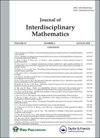实施CST复合萨迪克改造,治疗人口膨胀和衰退问题
IF 0.8
Q1 MATHEMATICS
引用次数: 0
摘要
现在,随着世界上人口膨胀和衰退问题的日益严重,研究者们正在努力寻找新的思路和建议,通过利用不同的综合转化来找到解决这些问题的成功方案。本文采用复Sadik变换来解决人口膨胀和衰退问题。本文章由计算机程序翻译,如有差异,请以英文原文为准。
Implementation of the CST complex Sadik transform to treat population expansion and decay problems
Now with the increasing problems of expansion of the population and decay in the world, researchers are making great efforts to find new ideas and proposals to find successful solutions to solve these problems through the utilization of different integrated transformations. In our paper, the complex Sadik transform is applied to resolve the issues of population expansion and decay.
求助全文
通过发布文献求助,成功后即可免费获取论文全文。
去求助
来源期刊

JOURNAL OF INTERDISCIPLINARY MATHEMATICS
MATHEMATICS-
CiteScore
2.70
自引率
23.50%
发文量
141
期刊介绍:
The Journal of Interdisciplinary Mathematics (JIM) is a world leading journal publishing high quality, rigorously peer-reviewed original research in mathematical applications to different disciplines, and to the methodological and theoretical role of mathematics in underpinning all scientific disciplines. The scope is intentionally broad, but papers must make a novel contribution to the fields covered in order to be considered for publication. Topics include, but are not limited, to the following: • Interface of Mathematics with other Disciplines • Theoretical Role of Mathematics • Methodological Role of Mathematics • Interface of Statistics with other Disciplines • Cognitive Sciences • Applications of Mathematics • Industrial Mathematics • Dynamical Systems • Mathematical Biology • Fuzzy Mathematics The journal considers original research articles, survey articles, and book reviews for publication. Responses to articles and correspondence will also be considered at the Editor-in-Chief’s discretion. Special issue proposals in cutting-edge and timely areas of research in interdisciplinary mathematical research are encouraged – please contact the Editor-in-Chief in the first instance.
 求助内容:
求助内容: 应助结果提醒方式:
应助结果提醒方式:


